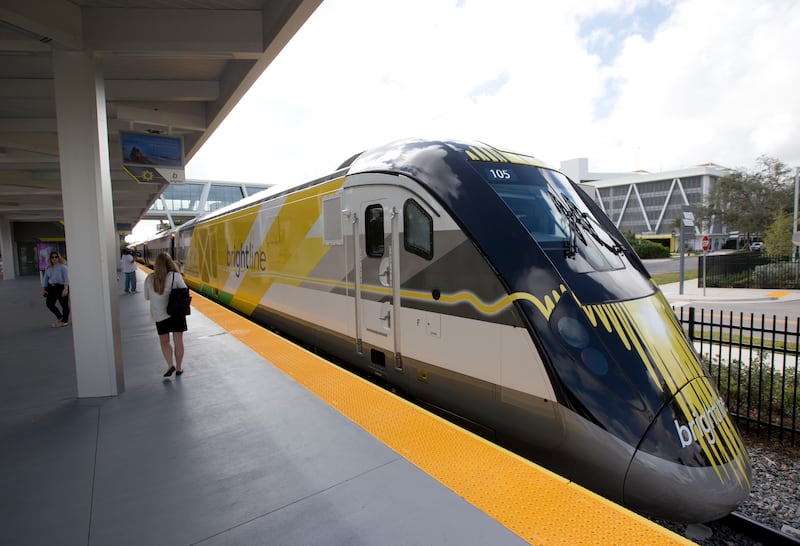Do you worry that China is working on a 30,000-mile high-speed rail system that, if ever completed, would run rings around America’s so-far virtually non-existent (except for a 50-mile section in the East) high-speed system?
Do you think critics are right that Britain’s recent decision to pull the plug on much of its high-speed project that would have linked London, Birmingham and Manchester, for cost reasons, will hurt the economy and damage investor confidence?
Or do you think the large public debts associated with high-speed rail projects are ultimately more damaging than anything fast trains could bring?
While you’re mulling that, here’s a tip: The best-laid plans of governments don’t always jibe with market preferences. And when this happens, go with the market.
Without question, the United States is on the precipice of a resurgence in passenger rail, but when private companies are at the wheel, the future looks a lot different than when the government lands on railway squares on the Monopoly board.
Private train company ideas
A company known as Dreamstar has discussed opening a line between Salt Lake City and Las Vegas, which would connect with a line from Vegas to Los Angeles. Officials I’ve spoken with say this pencils out only if the Vegas to Salt Lake City line runs overnight and offers luxury sleeping accommodations (and perhaps the ability to haul your car, as well).
Americans would be interested in trains that could take them about 400 miles, max, without the hassles of early arrivals, long lines and intrusive TSA checks at airports, officials say. For anything longer than that, they would rather fly.
A piece this month in L.A. Magazine shows Dreamstar is still on track (pun intended) to begin its first passenger route next summer. That would run from L.A. to San Francisco. It wouldn’t be high-speed, but the company is partnering with BMW’s design subsidiary to create the cars.
A Dreamstar official told me last year, “Our value proposition is if you’re going up to San Francisco (from L.A.) for a morning appointment, your (current) options are to get up at a ridiculously early hour or go up the night before and get a hotel.
“This adds cost and difficulties. If we can stay under airfare plus hotel, we can be viable.”
Meanwhile, a company called Brightline has begun offering train service between major cities in Florida.
Will these succeed? I don’t know, but they are willing to take a chance with their own money.
California’s high-speed adventure
Contrast that with the government’s proposed L.A. to San Francisco high-speed line. Voters approved this in 2008. TV station KCRA in Northern California reported last spring that the project would take another $100 billion to complete, with no specific timeline in place.
As if to echo this on the other side of the globe, the Wall Street Journal says Xi Jinping’s quest to crisscross China with ribbons of high-speed rail is “becoming a giant money pit.”
“China has spent more than $500 billion on new tracks, trains and stations in the past five years, while the country’s national railway operator, China State Railway Group, is nearing $1 trillion of debt and other liabilities,” the Journal said. “Keeping up with its debt requires $25 billion annually.”
Many Chinese citizens apparently are proud of this effort, especially in light of how far behind the U.S. is with high-speed rail, the Journal said.
But debt is debt, and this effort — stacked against a falling Chinese population and questionable demand — could keep the nation from doing other things while the economy suffers.
Zongyuan Zoe Liu, the Maurice R. Greenberg Fellow for China Studies at the Council on Foreign Relations and an author, put it well in a recent issue of Foreign Affairs. China’s troubles go far deeper than authoritarianism, an aging population and a real-estate crisis. “Simply put, in many crucial economic sectors, China is producing far more output than it, or foreign markets, can sustainably absorb.”
Too expensive?
Cato Institute senior fellow Randal O’Toole has argued that high-speed rail is obsolete and far too expensive, with the high-speed Amtrak Acela line running at 90 cents per passenger mile (in 2019), compared with a 13.8 cent average for airlines.
“Building a system longer than China’s would cost at least $4 trillion,” he wrote.
Meanwhile, the Federal Reserve said in its semi-annual financial stability report last week that the U.S. national debt is the biggest current risk to financial stability.
All the promises of jobs and environmental benefits mean little if your nation’s economy collapses.
And while we’re considering the differences between the public and private sectors, it’s worth noting that Dubai is close to offering fully autonomous air taxis that can take passengers quickly to nearby destinations. The U.S. is close to certifying these here, as well. This could be another emerging technology that eventually might compete with trains for short-haul traffic.
So, is high-speed rail a bad idea? That depends. If it’s market-driven and pursued with private money, it could stand a chance. People might enjoy the convenience. That is, until the TSA decides to make train stations look like airports.


